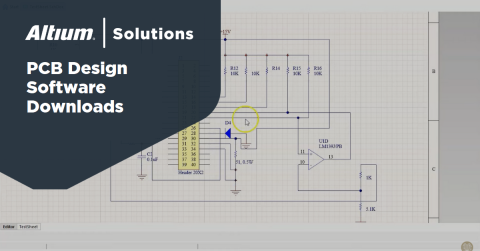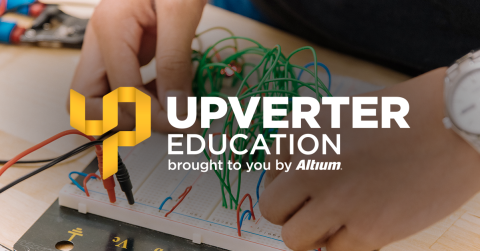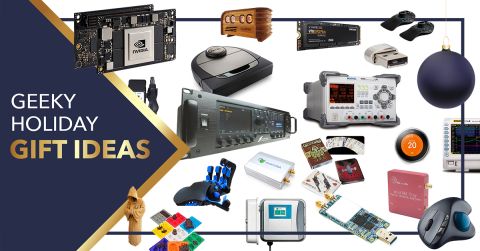Is IPC CID Training Important for Your Design Career?
Stephen Chavez is the lead electrical engineer that oversees a global design team for a well known military aerospace company in the greater Phoenix, AZ area. He is a highly skilled engineer and PCB designer whose passion for board design goes beyond his day-to-day work. He is a member of the IPC Designers Council Executive Board, is CID, CID+, and CIT certified, a CID trainer for Eptac, and a columnist for the PCB007 magazine. In this article, Stephen shares why he has a passion for CID training and the significance it holds for today’s PCB designers.
Judy Warner: When did you receive your CID, CID+ and CIT designations?
Chavez: I initially received my IPC CID certification back in 2008 in a class taught by Dieter Bergman. I then acquired my CID+ certification later in 2012 in a class taught by Gary Ferrari. Finally, in early 2016, I achieved the status and certification of an IPC Certified IPC Trainer (CIT) for PCB design under the guidance of the MIT’s Gary Ferrari, Mike Creeden and Cherie Litson. So, as you can see I have had the tremendous privilege to learn from some of the industry’s best and brightest PCB designers for which I am very grateful.
Warner: What impact do you think getting certified had on your career?
Chavez: I strongly believe that the impact of getting IPC CID and CID+ certified as a PCB designer has been an extremely positive game-changer for me in my career. I don’t think I would be where I am today as a PCB designer without these particular professional development courses. Early in my career, I struggled a lot because I had no formal PCB design education nor did I know where to turn to learn more. I didn’t fully understand IPC, industry seminars or professional development courses related to PCB design. It was definitely the school of hard knocks for me! All I knew at that time, was to put my head down and work as hard and as long as I possibly could to produce designs. I thought if I wanted to continue my education, I’d have to go back to college to study something like electrical engineering which would teach me more about principles and theory and just a little bit about PCB design. This coursework “kind of” covered PCB education, but nothing to the extent of what one would expect to get from a full university curriculum. Finally, I learned about CID training and I knew that’s what I was really looking for--practical training. Getting certified has helped align my skill set to a quality industry level standard, and has guided me to evolve as a true professional PCB designer: A designer who fully understands all that it entailed with design, fabrication and assembly of a PCB to industry standards, at a minimum. A designer who fully buys into, embraces, and applies the three perspectives of success regarding PCB design or what I refer to as the Designer’s Triangle of “making revision one work”.
Warner: How long have you been an IPC Certified IPC Trainer (CIT) and what inspired you to do that?
Chavez: I have been an IPC Certified Trainer (CIT) for CID/CID+ for 3 years now. I feel extremely passionate about PCB design and professional development. I truly enjoy passing on quality industry knowledge to others and giving them the opportunity to be successful.
I’ve been inspired by all the professionals that I have been very fortunate to have worked with in my career. Several of them have been excellent mentors to me. And yes, I too have had those individuals in my career that weren’t so good, but I still choose to use my experience with them in a positive way. I truly believe in paying it forward and in doing so, I feel I am honoring those that have helped me get to where I am in my career today. So, when I stand in front of a class or a large audience, I never feel that I’m standing alone. It’s all those that have helped me along the way, one way or another, and all those within my network that are standing right alongside me. That is what inspired me initially and continues to inspire me today.
Warner: Tell us about EPTAC and how and why they came to become the training source for IPC materials?
Chavez: EPTAC is the most highly regarded leader in solder training and IPC certification on a global scale. EPTAC gives professionals the skills to accelerate their careers, businesses and the ability to succeed in this highly competitive industry. For over 25 years, EPTAC has been helping companies raise their quality standards, improve productivity and maximize profits. Headquartered in Manchester, NH, EPTAC delivers the industry best training programs throughout established locations in the United States and Canada.
As for how and why they became the training source for IPC, I would suggest visiting their website https://www.eptac.com/. In my opinion, the entire team at EPTAC is awesome!
5.) How much do these courses cost and do you think there is a direct return on that investment for a designer? Will companies help designers?
When it comes to cost of these courses, I would suggest to contact EPTAC directly for these specific details.
As for a direct return on investment for a designer--definitely! Without a doubt there is a direct positive return on investment. I say this because I’ve experienced this personally in my own career. I highly recommend these certification courses because of the excellent quality of instruction and industry content of the material. I feel the bottom line is this: It’s ultimately up to each and every certified designer and how they apply their training going forward into their career. As an instructor, I always give my best and go the extra mile for each and every class and every student. I, like many of my fellow instructors, do all I can do to pass on the required industry knowledge. However, it’s up the students to apply this knowledge they are given and certified to.
Warner: Where can designers find out more about getting CID certified?
Chavez: Designers can contact IPC or EPTAC directly for certification details. There are additional industry resources to tap into to continually learn and grow. Examples of these resources are I-Connect007 (Design007) and UP Media (PCD&F). Both of these industry publications are excellent resources. We have a new industry column The Digital Layout in Design007 magazine and The Digital Route in PCD&F magazine. We hope these two new columns will be excellent additional resources for designers to find out more about certification and IPC Designers Council information. Lastly, feel free to contact me directly or any other instructor for more details.
Warner: Thank you, Steph, for sharing your insights and passions relative to CID training.
Chavez: You’re welcome, Judy, always a subject I’m happy to share with others.


















